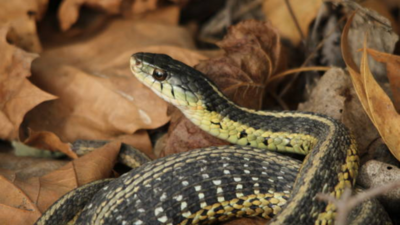ARTICLE AD BOX

Snakes have a way of making people either super curious or super nervous—sometimes both. Whether you're the type who loves spotting wildlife or you’d rather admire from a very safe distance, it’s actually pretty useful to know how to tell the difference between venomous and non-venomous snakes.
Let’s break it down in simple, real-world terms.
Check the head and neck
A lot of venomous snakes—like rattlesnakes or copperheads—have that classic triangle-shaped head with a thinner neck. This shape helps them deliver venom when they bite. On the flip side, non-venomous snakes usually have a more straight, narrow head with no sharp neck pinch.But here’s the twist: some harmless snakes can flatten their heads to look venomous when they’re scared.
So yeah, head shape might help, but it’s not 100% reliable.
Eyes: Cat vs. circle
Here’s a cool detail—many venomous snakes have eyes with vertical slit pupils, kind of like a cat’s. It helps them see better in low light. Non-venomous snakes? Their pupils are usually round.But hold up—some venomous snakes (like coral snakes) also have round pupils. So, like the head shape thing, this is more of a maybe than a guarantee.
Look for heat-sensing pits
Venomous pit vipers (like rattlesnakes and copperheads) have little heat-sensing pits between their eyes and nostrils.
These help them track warm-blooded prey—even in total darkness. Most non-venomous snakes don’t have these, although some like pythons do. So it’s helpful, but again… not a solid “yes or no” test.
Color clues... and tricksters
Some venomous snakes have pretty wild color patterns—and so do some of their non-venomous copycats. Take the coral snake and scarlet kingsnake. They both rock red, yellow, and black stripes. That’s where the old rhyme comes in:“Red touch yellow, kill a fellow.
Red touch black, friend of Jack.”It’s catchy—but don’t bet your life on it. There are exceptions, and it doesn’t apply everywhere in the world. So treat it like a hint, not a rule.
When in doubt? Stay back!
If you run into a snake and have even the slightest doubt, just keep your distance. Don’t try to touch it, chase it, or take a selfie with it. Stay calm, move away slowly, and let it do its thing. If it’s in your home or a populated area, call a local wildlife rescue or snake expert.Snakes might seem scary, but they’re a big part of the ecosystem. They keep rodent populations down and actually help balance nature. The more we understand them, the less fear we need to feel—and who knows, you might even end up respecting these misunderstood creatures.Disclaimer:The information provided in this article is for general educational purposes only and should not be used as a sole method for identifying venomous or non-venomous snakes. Snake appearances and behaviors can vary widely, and misidentification can be dangerous. Always maintain a safe distance from any snake, and never attempt to handle or provoke one. In case of a snake encounter or bite, contact local wildlife authorities or seek immediate medical attention from trained professionals. Stay safe and observe responsibly.



.png)
.png)
.png)
















 7 hours ago
4
7 hours ago
4









 English (US) ·
English (US) ·